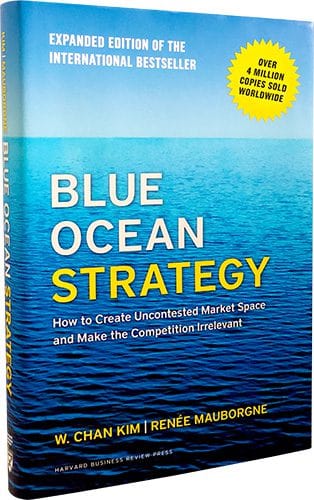WHAT ARE RED AND BLUE OCEANS?
The market universe is composed of two types of oceans:
red oceans and blue oceans
The market universe is composed of two types of oceans: red oceans and blue oceans.
What are red oceans?
Red oceans are all the industries in existence today – the known market space.
What are blue oceans?
Blue oceans are all the industries not in existence today – the unknown market space.
Why do we call them red oceans?
Cut-throat competition in existing industries turns the ocean bloody red. Hence the term ‘red ocean’.
Why do we call them blue oceans?
Unexplored and untainted by competition, ‘blue oceans’ are vast, deep, and powerful in terms of opportunity and growth.
What is red ocean strategy?
Red ocean strategy is all about competition. As the market space gets more crowded, companies compete fiercely for a greater share of limited demand. LEARN MORE.
What is blue ocean strategy?
Blue ocean strategy creates new demand. Companies develop uncontested market space rather than fight over a shrinking profit pool. LEARN MORE.
What outcomes does red ocean strategy produce?
Competing in red oceans is a zero-sum game. A market-competing strategy divides existing wealth between rival companies. As competition increases, prospects for profit and growth decline.
What outcomes does blue ocean strategy produce?
Creating blue oceans is non-zero-sum. There is ample opportunity for growth that is both profitable and rapid.
ORIGIN OF THE TERMS
Professors Chan Kim and Renée Mauborgne introduced the concepts of red and blue oceans in their international best-seller Blue Ocean Strategy. First published in 2005, it was updated and expanded with fresh content in 2015. It has sold over 4 MILLION copies and is being translated in a record-breaking 47 LANGUAGES.

THE BLUE OCEAN STRATEGY PRACTITIONER PROGRAM

Join the ranks of blue ocean strategy practitioners with our globally recognized program
Learn how to put blue ocean theory and its tools and frameworks into practice in just 5 weeks with our interactive, expert-led program.
